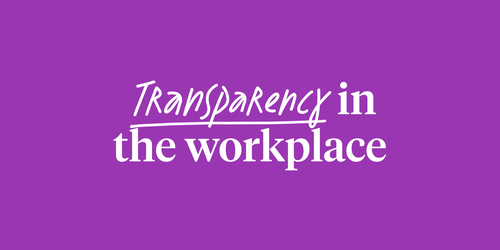
Article

Written by

Former Senior People Scientist, Culture Amp
I’ve devoted the last decade of my life to making work suck less. Along the way, I’ve realized that you don’t learn much about employee engagement and happiness by only studying burnout. If you want to learn what makes people happy, then find people who love their jobs and learn what they’re doing differently (hint: it’s about job crafting).
After coaching and interviewing over 1,000 people about their fulfillment at work, I discovered something at odds with much of what I knew about making work better:
People who love their jobs didn’t find the perfect role, team, or company. Instead, most of them found good jobs and started crafting them into even better ones.
We all have some opportunity to turn our jobs into ones we adore. Researchers call those of us that take advantage of that opportunity "Job Crafters." What follows are 19 practical ways you can use the science of job crafting to redesign your work to be more engaging and meaningful.
Every example used in this article comes from my work as a coach and people scientist, as well as the accounts of job crafters cited in academic research.
Researchers discovered that cooks who referred to themselves as Culinary Artists “used their creative impulses in ways that connected them to their work” and “allowed them to experience their work as meaningful and creative, rather than scripted and uninspiring.”
Creating your own title doesn’t mean you have to get HR’s approval to officially change your business cards, but you can change how you think about your work identity. Are you a Bartender, someone who pours cocktails, or a Mixologist who concocts intoxicating potions?
One study discovered hospital cleaning staff created more meaningful work experiences by recognizing how their roles were critical to healing patients. Not only did this make their jobs more engaging, they ultimately created a work unit that functioned better and created better interactions with nurses and other staff. Even debt collectors have found success in thinking about their role as “working with people to get debts off their mind” rather than just trying to collect money.
At the University of Michigan, fundraising telemarketers increased donations by over 150% after meeting one of their scholarship recipients in person. So try to connect with the people you help and let them tell you what your work means to them. If you’re like most people, it will make your work feel more worthwhile.
A study discovered that employees who strongly agree that they can link their personal goals to their organization’s goals are 3.6 times more likely to be engaged. Spend time thinking about how your work aligns with the company's success.
Ask your direct manager:
Things change even if you’ve had the same role for a while. The most important thing last quarter might not even be relevant this year. Finding out what’s important to your boss and your organization in your next 1-on-1 meeting will help you feel more aligned and make your work feel more purposeful.
In every moment, choose to focus on what you love about your job rather than what annoys you. This type of gratitude has been shown to improve our wellbeing, enhance our relationships, and even lead to better self-control.
When you rock a presentation, get a thank you note from a colleague, go on an enjoyable work retreat, or participate in an exciting developmental opportunity, document it.
Over time, you will better understand what’s important to you and what really makes you happy. Not only will this amplify your happiness in the present, but it will also give you the information you can use as you continue to craft your role in the future.
For one week, at the end of every day, jot down the names of the people you interacted with and put them into two categories: those that gave you energy and those that didn’t. Spend more time with the people that give you energy, but limit the time you spend with those that drain you by sending them emails rather than communicating with them in person. One TEDx speaker referred to this as the spend versus send strategy.
According to Adam Grant, a Wharton Business School professor, there’s a good chance most of us are underestimating the degree to which our work friendships influence our happiness and even our effectiveness. While we might not need to have best friends at work, we can certainly do things to foster better relationships.
Just because you have the same title doesn't mean you have to have the same job. Think of all the bullet points that accompany your job title and throw them into a collective pile. Then go through those responsibilities with your colleagues and assign tasks based on your interests and aptitudes. Find a complementary partner to help you get through things you struggle with. Likewise, identify their weaknesses and lend them your strengths.
At Culture Amp, for instance, I am a member of Slack channels and groups related to public speaking, dog ownership, and even Game of Thrones. Groups like these can be an excellent opportunity for you to connect with colleagues you might not otherwise have access to.
Do you have a coding language you’re passionate about? If so, consider putting together a practical lunchtime workshop on Swift, Typescript, or the hottest language these days. Are you a People Geek? Then maybe you can start a mini Geekup within your organization on creating a more people-oriented workplace.
An employee resource group is a voluntary, employee-led group consisting of people who join together based on shared interests, backgrounds, or demographic factors such as gender, race, or ethnicity. My coaching clients who have joined or started an employee resource group have found opportunities to build mentoring relationships with leaders in their organization and gained valuable leadership experience.
I once had a coaching client who loved connecting with people. Unfortunately, his desk was in a corner office far from the hustle and bustle. Realizing his extroverted nature, he relocated himself to a makeshift office at the cafeteria entrance. He came to know nearly everyone at the company and built a reputation for connecting new people to managers with exciting projects.
On the other hand, I’ve worked with countless introverts who have used one-on-one connections to influence people outside of larger team meetings. Rather than trying to be more extroverted, they learned how to carve out opportunities to build relationships in settings that work for them.
Start by taking a free strengths assessment to identify your virtues. One study followed 240 college students and found that those who used their strengths in connection with their goals had greater goal attainment and enhanced wellbeing.
Another Dutch study found that in weeks where civil engineers frequently used their strengths at work, they were 83% more likely to describe themselves as immersed in their work, enthusiastic about their jobs, and bursting with energy throughout the week than on weeks where they were rarely able to use their strengths.
One study interviewed an HR manager who spent time on employment law because she always wanted to be an attorney and a customer service rep who related her job of helping clients to being a therapist.
Let’s say you have a gift for teaching and developing others but find yourself working outside of school. Consider ways that you can flex your talents within your job. Take, for example, a doctor who volunteers to train residents to fulfill her passion for teaching. Or, for example, a marketing manager who volunteers to work with interns and help them build their skills.
Many innovations flow out of automating menial tasks. One client of mine, a debt collector, created an Excel document that automated notices that went out to customers. Not only did his job become more enjoyable, but it also set him up for a successful career transition into marketing automation.
If you’re a manager or leader, you might be reading this and getting slightly worried. You might be thinking, “I hired people to do a specific job, and I don’t want them to run around spending their time on other things.”
The truth is, job crafting is already happening – every day – but it’s not always productive or intentional. By encouraging job crafting, you get to guide it toward company objectives.
Imagine you hired a babysitter to watch your kids while you and your partner went out for dinner and a show. When you get back home, you not only find that your kids are safely asleep, but the babysitter has also cleaned the kitchen, finished the laundry, vacuumed the floor, made you cookies, and created a better relationship between your kids and your neighbors. Would you complain?
Job crafting is not without occasional downfalls. Taking on too many new tasks can lead to overwork if you’re not careful. On the other hand, removing too many tasks might lead to lower performance.
Also, some jobs can’t be perfected with job crafting alone. Creating a great culture is a team sport requiring more than one player. That’s why having the proper feedback and action strategy is so important. Meanwhile, job crafting can help empower you to do your part.
It’s easy to think that career fulfillment is about finding the perfect fit. The truth is, however, we have the power to craft a perfect fit using our current job descriptions and tasks as the starting point. Crafting your job is, in a sense, what engagement is all about: challenging yourself to do more, enjoying time spent with your coworkers, and pushing yourself to the limit of what you’re capable of.
Even the most rigid jobs offer some opportunity for adjustment. For instance, if you’re an out-of-work actor making ends meet by waiting tables, you might look at your customer interactions as a way to sharpen your acting skills. After all, nobody will notice if you try out a few accents (especially if you’re any good).
Research has shown that people who strongly follow an “inner voice” that guides them in the directions that are “right and satisfying” for themselves are more likely to have high self-esteem, experience vitality in their life, and obtain higher rates of subjective and psychological well-being.
So why not follow that inner voice for yourself? After all, the number of ways one can carry out the responsibilities of a role is limitless. So why limit yourself? Try job crafting.

Find purpose and belonging while doing the most meaningful work of your career.